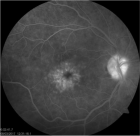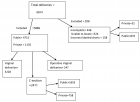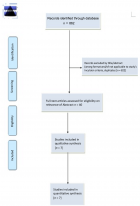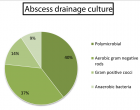Abstract
Research Article
Characterization of Salmonella spp. isolated from small turtles and human in Republic of Korea
Su-Jin Chae, Jin-Suk Lim and Deog-Yong Lee*
Published: 11 December, 2020 | Volume 4 - Issue 1 | Pages: 051-055
In 2013, the World Health Organization (WHO) reported that small, pet turtles had caused multistate Salmonella outbreaks in the United States, from where small turtles were subsequently exported into the Republic of Korea. We investigated cases of salmonellosis in South Korea associated with domestic small turtles and analysed genetic characteristics of Salmonella isolates in commercially-available small turtles. We traced six Salmonella serovars, known to have caused human infection in the United States (S. Sandiego, S. Pomona, S. Poona, S. Newport, I 4,(5),12:i:-, and S. Typhimurium), in isolates from suspected Salmonella infection cases in Korea from 2006 to 2015. Additionally, we conducted a pilot study of isolates from small turtles being sold in Korean markets, and performed molecular genetic analysis on the identified strains. S. Pomona was identified in one Salmonella infection case, while all strains isolated from small turtles belonged to either subspecies I (enterica, n = 10, 71.4%) or subspecies IIIb (diarizonae, n = 4, 28.6%). Two serovars (S. Pomona and S. Sandiego) that were highly associated with turtle-to-human transmission were identified with 100% homology to human isolates. Previous to this study, turtle-associated human S. Pomona infections were not well reported in Korea. We report Salmonella infection in small turtles in Korea, and confirm that small turtles should be considered the first infectious agent in S. Pomona infection. We therefore suggest quarantine measures for importing small turtles be enhanced in Korea.
Read Full Article HTML DOI: 10.29328/journal.ivs.1001027 Cite this Article Read Full Article PDF
Keywords:
Salmonella infection; Turtles; Zoonoses; Multilocus sequence typing (MLST); Pulsed-field gel electrophoresis (PFGE)
References
- Salmonellosis associated with pet turtles--Wisconsin and Wyoming, 2004. MMWR. 2005; 54. 223-226. PubMed: https://pubmed.ncbi.nlm.nih.gov/15758895/
- Seepersadsingh N, Adesiyun AA. Prevalence and antimicrobial resistance of Salmonella spp. in pet mammals, reptiles, fish aquarium water, and birds in Trinidad. J Vet Med B Infect Dis Vet Public Health. 2003; 50: 488-493. PubMed: https://pubmed.ncbi.nlm.nih.gov/14720186/
- Woodward DL, Khakhria R, Johnson WM. Human salmonellosis associated with exotic pets. J Clin Microbiol. 1997; 35: 2786-2790. PubMed: https://pubmed.ncbi.nlm.nih.gov/9350734/
- DuPonte MW, Nakamura RM, Chang EM. Activation of latent Salmonella and Arizona organisms by dehydration of red-eared turtles, Pseudemys scripta-elegans. Am J Vet Re. 1978; 39: 529-530. PubMed: https://pubmed.ncbi.nlm.nih.gov/637401/
- Bosch S, Tauxe RV, Behravesh CB. Turtle-Associated Salmonellosis, United States, 2006-2014. Emerg Infect Dis. 2016; 22: 1149-1155. PubMed: https://www.ncbi.nlm.nih.gov/pmc/articles/PMC4918145/
- Lee DY, Lee E, Min JE, Kim SH, Oh HB, et al. Epidemic by Salmonella I 4,[5], 12: i:-and characteristics of isolates in Korea. J Infection Chemotherapy. 2011; 43:186-190.
- Kim SH, Kim SH, Lee SW, Kang YH, Lee BK. Rapid serological identification for monophasic Salmonella serovars with a hin gene: specific polymerase chain reaction. J Bacteriol Virol. 2005; 35: 291-298.
- Sambrook J, Fritsch EF, Maniatis T. Molecular cloning: a laboratory manual: Cold spring harbor laboratory press; 1989.
- Grimont PAD, Weill FX. Antigenic formulae of the Salmonella serovars. WHO collaborating centre for reference on Salmonella. 2007; 9: 1-166.
- Issenhuth-Jeanjean S, Roggentin P, Mikoleit M, Guibourdenche M, de Pinna E, et al. Supplement 2008–2010 (no. 48) to the white–Kauffmann–Le minor scheme. J Research in microbiology. 2014; 165: 526-530. PubMed: https://pubmed.ncbi.nlm.nih.gov/25049166/
- Yun YS, Chae SJ, Na HY, Chung GT, Yoo CK, et al. Modified method of multilocus sequence typing (MLST) for serotyping in Salmonella species. J Bacteriol Virol. 2015; 45: 314-318.
- Institute CaLS. Performance standards for antimicrobial susceptibility testing. 2018; 23.
- Geue L, Loschner U. Salmonella enterica in reptiles of German and Austrian origin. Vet Microbiol. 2002; 84: 79-91. PubMed: https://pubmed.ncbi.nlm.nih.gov/11731161/
- Meyer Sauteur PM, Relly C, Hug M, Wittenbrink MM, Berger C. Risk factors for invAsive reptile-associated salmonellosis in children. Vector Borne Zoonotic Dis. 2013; 13: 419-421. https://pubmed.ncbi.nlm.nih.gov/23473215/
- Nakadai A, Kuroki T, Kato Y, Suzuki R, Yamai S, Yaginuma C, et al. Prevalence of Salmonella spp. in pet reptiles in Japan. J Vet Med Sci. 2005; 67: 97-101. PubMed: https://pubmed.ncbi.nlm.nih.gov/15699603/
- Khuly P, Meyer T, Carlson R, Delamaide Gasper JA, Rylander H, et al. Eight multistate outbreaks of human Salmonella infections linked to small turtles (final update). J Am Vet Med Assoc. 2014; 244: 1243-1245.
- Trade statics system. Korea Custom Service. 2018. http://www.customs.go.kr.
- Kim JD, Choi SY, Kim DS, Kim KH. Two Children with Nontyphoidal Salmonellosis Assumed by Pets Korean J Pediatr Infect Dis. 2013; 20: 41-45.
- Chae SJ, Yun YS, Yoo CK, Chung GT, Lee DY. First Report of Salmonella Serotype Tilene Infection in Korea. J Annals of Clinical Microbiology. 2016; 19: 24-27.
- Lee DY, Kang Y. Human infection of Salmonella matadi in Korea. Yonsei Med J. 2013; 54: 1297-1298. PubMed: https://www.ncbi.nlm.nih.gov/pmc/articles/PMC3743207/
- Turtle-associated salmonellosis in humans--United States, 2006-2007. MMWR. 2007; 56: 649.
- Tauxe RV, Rigau-Perez JG, Wells JG, Blake PA. Turtle-associated salmonellosis in Puerto Rico. Hazards of the global turtle trade. JAMA. 1985; 254: 237-239. PubMed: https://pubmed.ncbi.nlm.nih.gov/3999366/
- Cooke FJ, De Pinna E, Maguire C, Guha S, Pickard DJ, et al. First report of human infection with Salmonella enterica serovar Apapa resulting from exposure to a pet lizard. J Clin Microbiol. 2009; 47: 2672-2674. PubMed: https://www.ncbi.nlm.nih.gov/pmc/articles/PMC5617995/
- Chen CY, Chen WC, Chin SC, Lai YH, Tung KC, et al. Prevalence and antimicrobial susceptibility of Salmonellae isolates from reptiles in Taiwan. J Vet Diagn Invest. 2010; 22: 44-50. PubMed: https://pubmed.ncbi.nlm.nih.gov/20093681/
Figures:

Figure 1
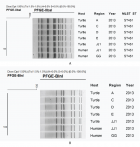
Figure 2
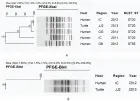
Figure 3
Similar Articles
-
Characterization of Salmonella spp. isolated from small turtles and human in Republic of KoreaSu-Jin Chae,Jin-Suk Lim,Deog-Yong Lee*. Characterization of Salmonella spp. isolated from small turtles and human in Republic of Korea. . 2020 doi: 10.29328/journal.ivs.1001027; 4: 051-055
-
Fish-borne parasites proficient in zoonotic diseases: a mini reviewAvishek Bardhan*. Fish-borne parasites proficient in zoonotic diseases: a mini review. . 2022 doi: 10.29328/journal.ivs.1001035; 6: 005-012
Recently Viewed
-
Treatment Outcome in Patients with Myofascial Orofacial Pain: A Randomized Clinical TrialAnders Wänman*, Susanna Marklund, Negin Yekkalam. Treatment Outcome in Patients with Myofascial Orofacial Pain: A Randomized Clinical Trial. J Oral Health Craniofac Sci. 2024: doi: 10.29328/journal.johcs.1001046; 9: 001-008
-
Hygiene and Care Protocols for Implant-supported Dental Prostheses in Patients with DiabetesHakob Khachatryan, Emma Boshnaghyan, Sevak Papoyan, Gagik Hakobyan*. Hygiene and Care Protocols for Implant-supported Dental Prostheses in Patients with Diabetes. J Oral Health Craniofac Sci. 2024: doi: 10.29328/journal.johcs.1001047; 9: 009-014
-
Advancing Oral Health and Craniofacial Science through Microchip ImplantsShekufeh Shafeie*. Advancing Oral Health and Craniofacial Science through Microchip Implants. J Oral Health Craniofac Sci. 2024: doi: 10.29328/journal.johcs.1001048; 9: 015-018
-
Texture Analysis of Hard Tissue Changes after Sinus Lift Surgery with Allograft and XenograftMohammad Azimzadeh, Farzad Esmaeili, Narges Bayat, Kasra Rahimipour, Amir Ebrahimpour Tolouei*. Texture Analysis of Hard Tissue Changes after Sinus Lift Surgery with Allograft and Xenograft. J Oral Health Craniofac Sci. 2024: doi: 10.29328/journal.johcs.1001049; 9: 019-022
-
Awareness and Knowledge of Specialists/Trainers and General Dental Practitioners about Medical-Related Osteonecrosis of the JawsAbdulhamit Taha Koca,Mustafa Bayhan,Yunus Ayberk Demir,Ayse Zeynep Zengin*. Awareness and Knowledge of Specialists/Trainers and General Dental Practitioners about Medical-Related Osteonecrosis of the Jaws. J Oral Health Craniofac Sci. 2024: doi: 10.29328/journal.johcs.1001050; 9: 023-031
Most Viewed
-
Evaluation of Biostimulants Based on Recovered Protein Hydrolysates from Animal By-products as Plant Growth EnhancersH Pérez-Aguilar*, M Lacruz-Asaro, F Arán-Ais. Evaluation of Biostimulants Based on Recovered Protein Hydrolysates from Animal By-products as Plant Growth Enhancers. J Plant Sci Phytopathol. 2023 doi: 10.29328/journal.jpsp.1001104; 7: 042-047
-
Sinonasal Myxoma Extending into the Orbit in a 4-Year Old: A Case PresentationJulian A Purrinos*, Ramzi Younis. Sinonasal Myxoma Extending into the Orbit in a 4-Year Old: A Case Presentation. Arch Case Rep. 2024 doi: 10.29328/journal.acr.1001099; 8: 075-077
-
Feasibility study of magnetic sensing for detecting single-neuron action potentialsDenis Tonini,Kai Wu,Renata Saha,Jian-Ping Wang*. Feasibility study of magnetic sensing for detecting single-neuron action potentials. Ann Biomed Sci Eng. 2022 doi: 10.29328/journal.abse.1001018; 6: 019-029
-
Pediatric Dysgerminoma: Unveiling a Rare Ovarian TumorFaten Limaiem*, Khalil Saffar, Ahmed Halouani. Pediatric Dysgerminoma: Unveiling a Rare Ovarian Tumor. Arch Case Rep. 2024 doi: 10.29328/journal.acr.1001087; 8: 010-013
-
Physical activity can change the physiological and psychological circumstances during COVID-19 pandemic: A narrative reviewKhashayar Maroufi*. Physical activity can change the physiological and psychological circumstances during COVID-19 pandemic: A narrative review. J Sports Med Ther. 2021 doi: 10.29328/journal.jsmt.1001051; 6: 001-007

HSPI: We're glad you're here. Please click "create a new Query" if you are a new visitor to our website and need further information from us.
If you are already a member of our network and need to keep track of any developments regarding a question you have already submitted, click "take me to my Query."






